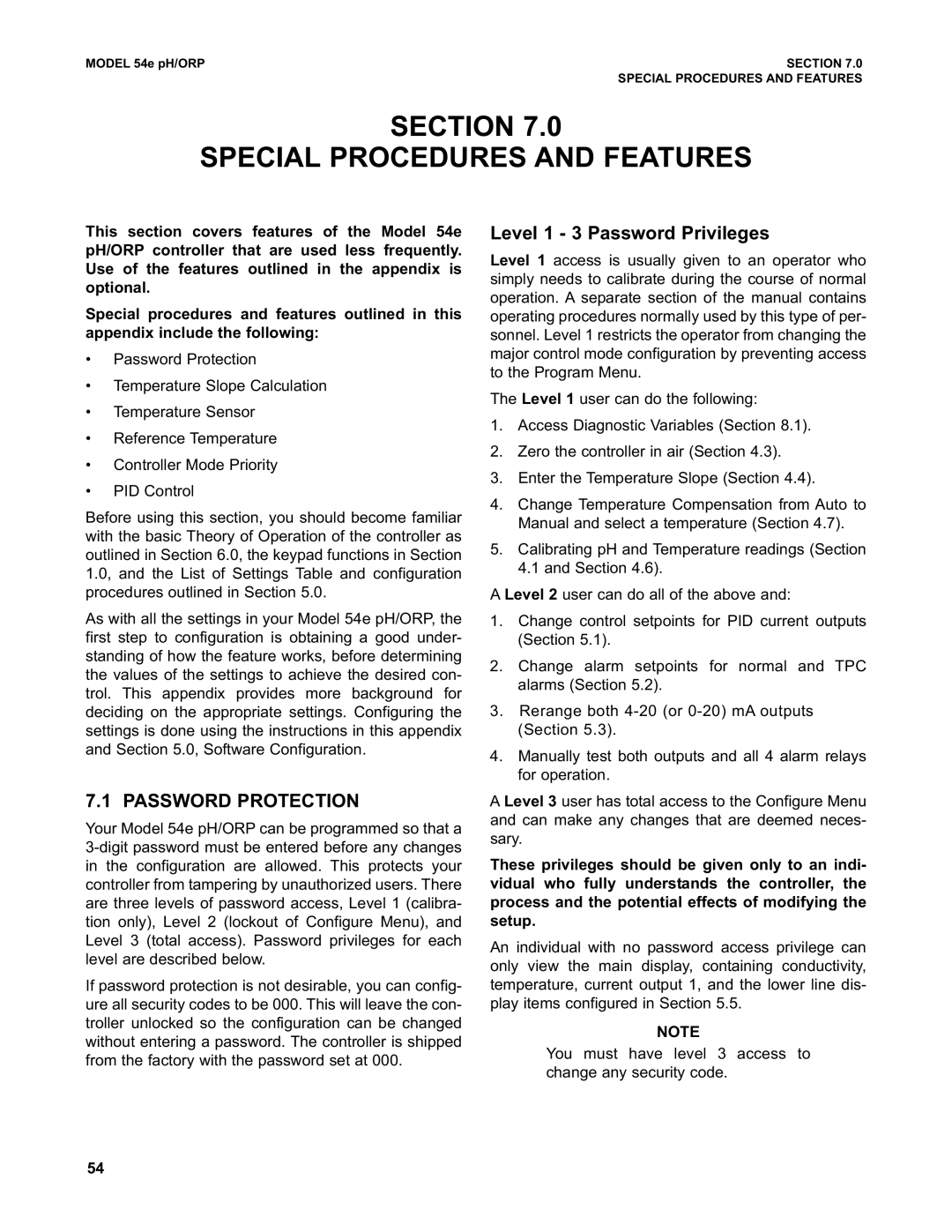MODEL 54e pH/ORP | SECTION 7.0 |
| SPECIAL PROCEDURES AND FEATURES |
SECTION 7.0
SPECIAL PROCEDURES AND FEATURES
This section covers features of the Model 54e pH/ORP controller that are used less frequently. Use of the features outlined in the appendix is optional.
Special procedures and features outlined in this appendix include the following:
•Password Protection
•Temperature Slope Calculation
•Temperature Sensor
•Reference Temperature
•Controller Mode Priority
•PID Control
Before using this section, you should become familiar with the basic Theory of Operation of the controller as outlined in Section 6.0, the keypad functions in Section 1.0, and the List of Settings Table and configuration procedures outlined in Section 5.0.
As with all the settings in your Model 54e pH/ORP, the first step to configuration is obtaining a good under- standing of how the feature works, before determining the values of the settings to achieve the desired con- trol. This appendix provides more background for deciding on the appropriate settings. Configuring the settings is done using the instructions in this appendix and Section 5.0, Software Configuration.
7.1 PASSWORD PROTECTION
Your Model 54e pH/ORP can be programmed so that a
If password protection is not desirable, you can config- ure all security codes to be 000. This will leave the con- troller unlocked so the configuration can be changed without entering a password. The controller is shipped from the factory with the password set at 000.
Level 1 - 3 Password Privileges
Level 1 access is usually given to an operator who simply needs to calibrate during the course of normal operation. A separate section of the manual contains operating procedures normally used by this type of per- sonnel. Level 1 restricts the operator from changing the major control mode configuration by preventing access to the Program Menu.
The Level 1 user can do the following:
1.Access Diagnostic Variables (Section 8.1).
2.Zero the controller in air (Section 4.3).
3.Enter the Temperature Slope (Section 4.4).
4.Change Temperature Compensation from Auto to Manual and select a temperature (Section 4.7).
5.Calibrating pH and Temperature readings (Section 4.1 and Section 4.6).
A Level 2 user can do all of the above and:
1.Change control setpoints for PID current outputs (Section 5.1).
2.Change alarm setpoints for normal and TPC alarms (Section 5.2).
3.Rerange both
4.Manually test both outputs and all 4 alarm relays for operation.
A Level 3 user has total access to the Configure Menu and can make any changes that are deemed neces- sary.
These privileges should be given only to an indi- vidual who fully understands the controller, the process and the potential effects of modifying the setup.
An individual with no password access privilege can only view the main display, containing conductivity, temperature, current output 1, and the lower line dis- play items configured in Section 5.5.
NOTE
You must have level 3 access to change any security code.
54
